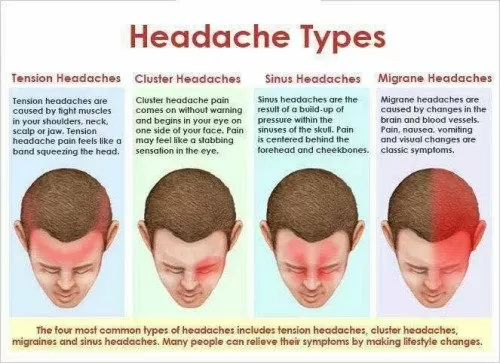A migraine is a severe, painful headache that can be preceded or accompanied by sensory warning signs such as flashes of light, blind spots, tingling in the arms and legs, nausea, vomiting, and increased sensitivity to light and sound.
What are Migraine Pains?
It is believed that due to abnormal brain activity that is causing a temporary alteration in the nerve signals, chemicals and blood flow in the brain, this problem arises. But still the definite reason of migraine pain is now known.
How to differ Headaches?
What factors cause Migraine headaches?
Those who are victim of migraine pain can judge the factors that cause the headaches, but there are many who cannot. Potential migraine causes are:
- Allergies and allergic reactions
- Bright lights, loud noises, flickering lights, smoky rooms, temperature changes, strong smells and certain odors or perfumes
- Physical or emotional stress, tension,anxiety, depression, excitement
- Physical triggers such astiredness, jet lag, exercise
- Changes in sleep patterns or irregular sleep
- Smoking or exposure to smoke
- Skipping meals or fasting causing low blood sugar
- Dehydration
- Alcohol
- Hormonal triggers such as menstrual cycle fluctuations, birth control pills, menopause
- Tension headaches
- Foods containing tyramine (red wine, aged cheese, smoked fish, chicken livers, figs, and some beans), monosodium glutamate (MSG), or nitrates (like bacon, hot dogs and salami)
- Other foods such as chocolate, nuts, peanut butter, avocado, banana, citrus, onions, dairy products and fermented or pickled foods
- Medication such as sleeping tablets, the contraceptive pill, hormone replacement therapy.
What are symptoms of Migraine?
Symptoms of migraine can occur a while before the headache, immediately before the headache, during the headache and after the headache. Most common symptoms are listed here however they may vary patient to patient.
- Moderate to severe pain, usually confined to one side of the head during an attack, but can occur on either side of the head
- The pain is usually a severe, throbbing, pulsing pain
- Increasing pain during physical activity
- Inability to perform regular activities due to pain
- Feeling sick and physically being sick
- Increased sensitivity to light and sound, relieved by lying quietly in a darkened room.











